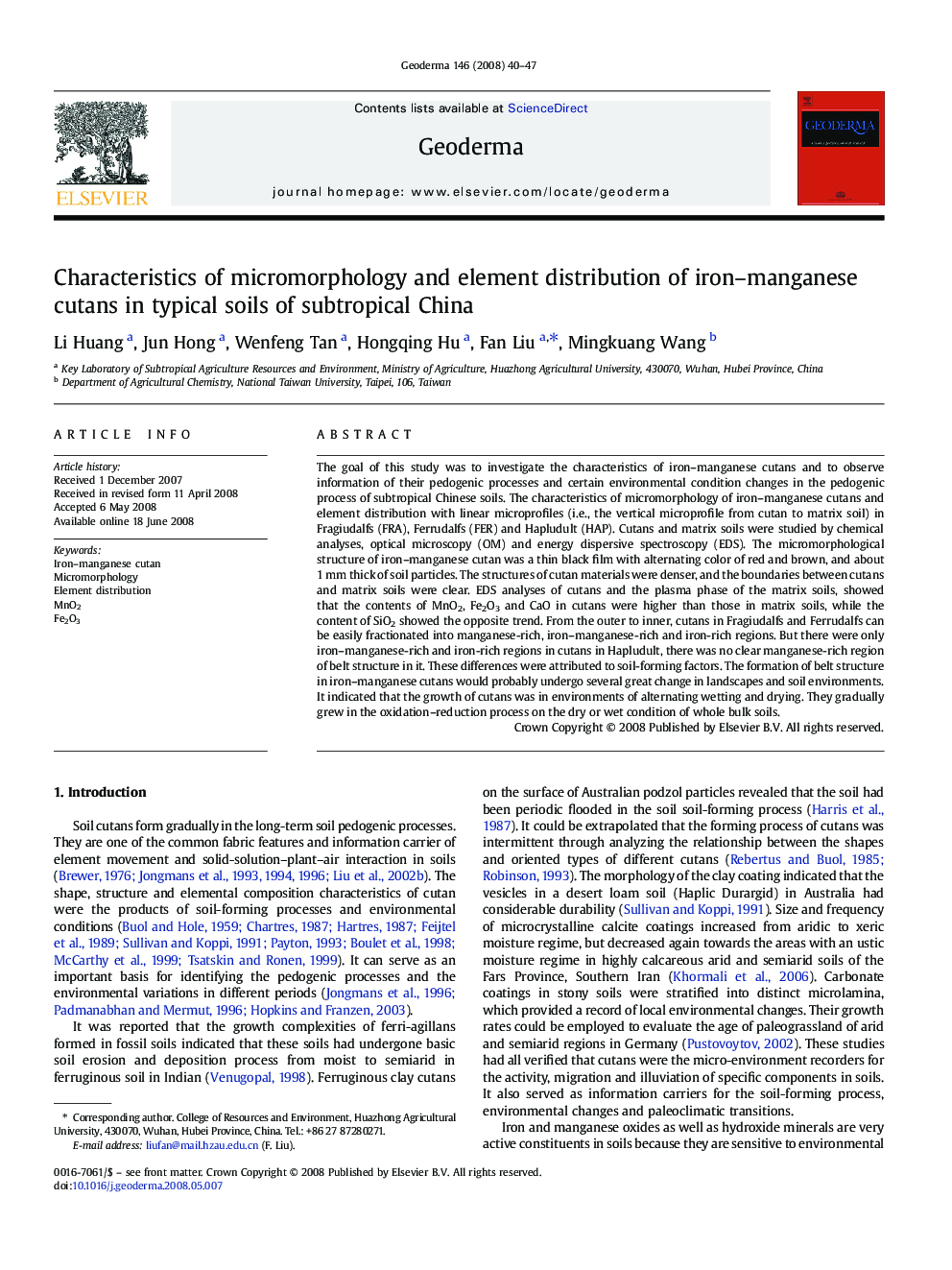| کد مقاله | کد نشریه | سال انتشار | مقاله انگلیسی | نسخه تمام متن |
|---|---|---|---|---|
| 4575033 | 1629541 | 2008 | 8 صفحه PDF | دانلود رایگان |
عنوان انگلیسی مقاله ISI
Characteristics of micromorphology and element distribution of iron-manganese cutans in typical soils of subtropical China
دانلود مقاله + سفارش ترجمه
دانلود مقاله ISI انگلیسی
رایگان برای ایرانیان
کلمات کلیدی
موضوعات مرتبط
مهندسی و علوم پایه
علوم زمین و سیارات
فرآیندهای سطح زمین
پیش نمایش صفحه اول مقاله

چکیده انگلیسی
The goal of this study was to investigate the characteristics of iron-manganese cutans and to observe information of their pedogenic processes and certain environmental condition changes in the pedogenic process of subtropical Chinese soils. The characteristics of micromorphology of iron-manganese cutans and element distribution with linear microprofiles (i.e., the vertical microprofile from cutan to matrix soil) in Fragiudalfs (FRA), Ferrudalfs (FER) and Hapludult (HAP). Cutans and matrix soils were studied by chemical analyses, optical microscopy (OM) and energy dispersive spectroscopy (EDS). The micromorphological structure of iron-manganese cutan was a thin black film with alternating color of red and brown, and about 1Â mm thick of soil particles. The structures of cutan materials were denser, and the boundaries between cutans and matrix soils were clear. EDS analyses of cutans and the plasma phase of the matrix soils, showed that the contents of MnO2, Fe2O3 and CaO in cutans were higher than those in matrix soils, while the content of SiO2 showed the opposite trend. From the outer to inner, cutans in Fragiudalfs and Ferrudalfs can be easily fractionated into manganese-rich, iron-manganese-rich and iron-rich regions. But there were only iron-manganese-rich and iron-rich regions in cutans in Hapludult, there was no clear manganese-rich region of belt structure in it. These differences were attributed to soil-forming factors. The formation of belt structure in iron-manganese cutans would probably undergo several great change in landscapes and soil environments. It indicated that the growth of cutans was in environments of alternating wetting and drying. They gradually grew in the oxidation-reduction process on the dry or wet condition of whole bulk soils.
ناشر
Database: Elsevier - ScienceDirect (ساینس دایرکت)
Journal: Geoderma - Volume 146, Issues 1â2, 31 July 2008, Pages 40-47
Journal: Geoderma - Volume 146, Issues 1â2, 31 July 2008, Pages 40-47
نویسندگان
Li Huang, Jun Hong, Wenfeng Tan, Hongqing Hu, Fan Liu, Mingkuang Wang,